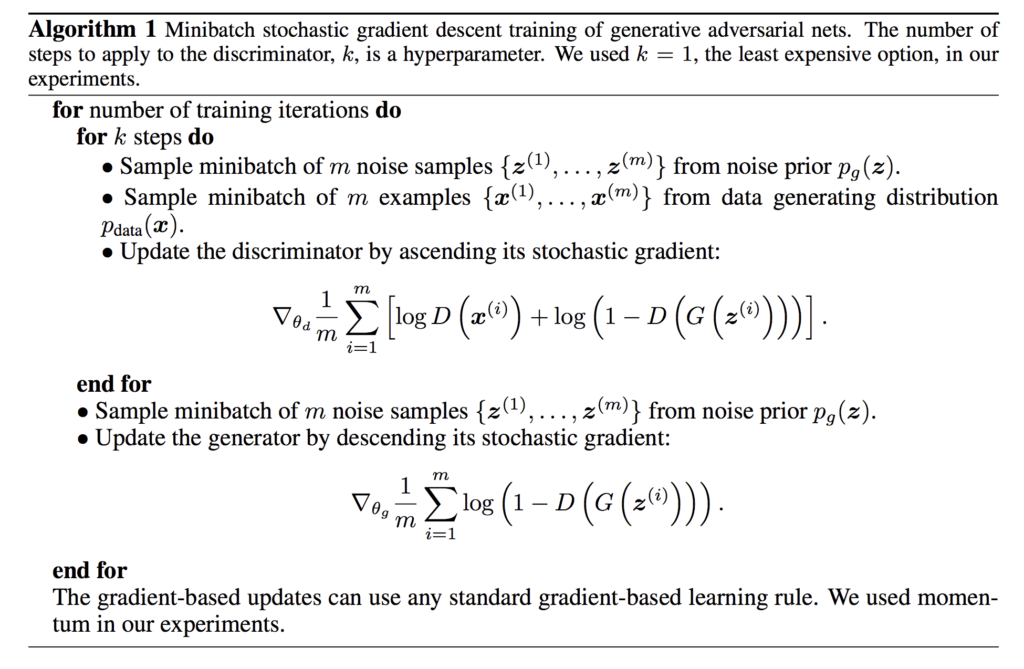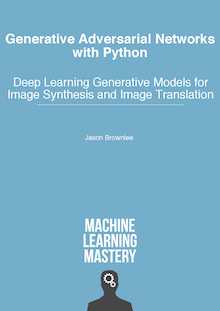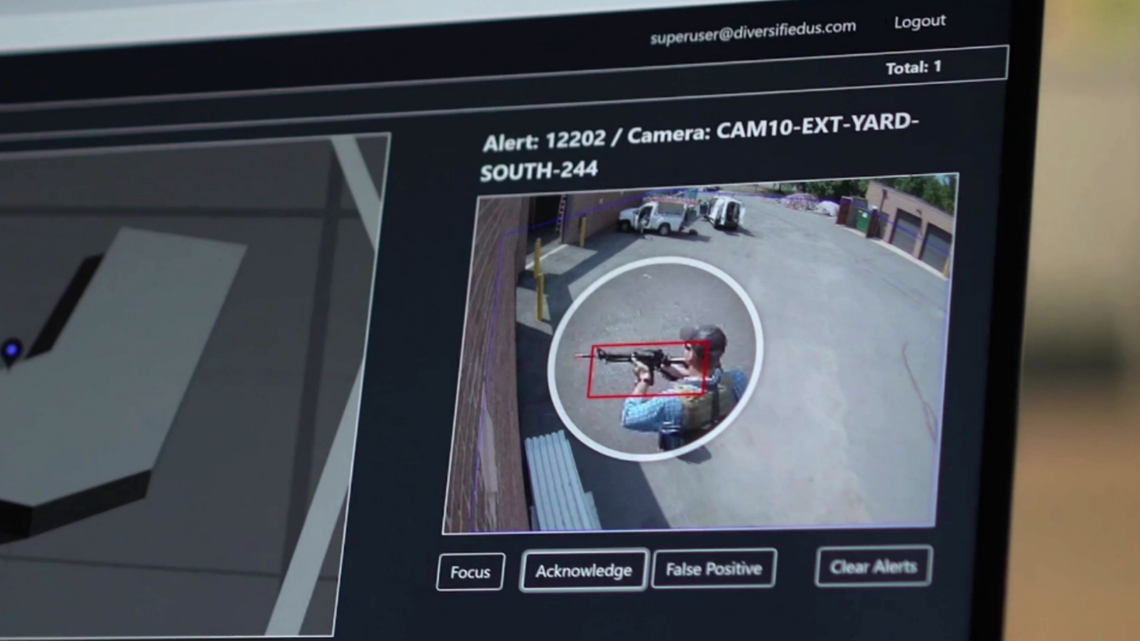The Generative Adversarial Network, or GAN for brief, is a style for educating a generative version.
The style is included 2 versions. The generator that we want, as well as a discriminator version that is made use of to aid in the training of the generator. Originally, both of the generator as well as discriminator versions were applied as Multilayer Perceptrons (MLP), although much more lately, the versions are applied as deep convolutional semantic networks.
It can be testing to recognize just how a GAN is educated as well as specifically just how to recognize as well as apply the loss feature for the generator as well as discriminator versions.
In this tutorial, you will certainly find just how to apply the generative adversarial network training formula as well as loss features.
After finishing this tutorial, you will certainly recognize:
- Just how to apply the training formula for a generative adversarial network.
- Just how the loss feature for the discriminator as well as generator job.
- Just how to apply weight updates for the discriminator as well as generator versions in method.
Discover just how to create DCGANs, conditional GANs, Pix2Pix, CycleGANs, as well as much more with Keras in my brand-new GANs publication, with 29 detailed tutorials as well as complete resource code.
Allowed’s begin.
Just How to Code the Generative Adversarial Network Training Formula as well as Loss Features
Image by Hilary Charlotte, some legal rights booked.
Guide Introduction
This tutorial is split right into 3 components; they are:
- Just How to Carry Out the GAN Training Formula
- Recognizing the GAN Loss Feature
- Just How to Train GAN Designs in Method
Note: The code instances in this tutorial are fragments just, not standalone runnable instances. They are created to assist you create an instinct for the formula as well as they can be made use of as the beginning factor for applying the GAN training formula by yourself task.
Just How to Carry Out the GAN Training Formula
The GAN training formula includes training both the discriminator as well as the generator version in parallel.
The formula is summed up in the number listed below, drawn from the initial 2014 paper by Goodfellow, et al. entitled “Generative Adversarial Networks.”

Recap of the Generative Adversarial Network Educating Algorithm.Taken from: Generative Adversarial Networks.
Allowed’s take a while to unbox as well as obtain comfy with this formula.
The external loophole of the formula includes repeating over actions to educate the versions in the style. One cycle with this loophole is not a date: it is a solitary upgrade included details set updates to the discriminator as well as generator versions.
A date is specified as one cycle with a training dataset, where the examples in a training dataset are made use of to upgrade the version weights in mini-batches. As an example, a training dataset of 100 examples made use of to educate a version with a mini-batch dimension of 10 examples would certainly entail 10 small set updates per date. The version would certainly be suitabled for a provided variety of dates, such as 500.
This is commonly concealed from you through the automated training of a version through a contact us to the fit() feature as well as defining the variety of dates as well as the dimension of each mini-batch.
When it comes to the GAN, the variety of training versions need to be specified based upon the dimension of your training dataset as well as set dimension. When it comes to a dataset with 100 examples, a set dimension of 10, as well as 500 training dates, we would certainly initially determine the variety of sets per date as well as utilize this to determine the overall variety of training versions making use of the variety of dates.
As an example:
.
.
|
. . |
batches_per_epoch =-LRB- **************************************) flooring( dataset_size/ batch_size) total_iterations =-LRB- **************************************) batches_per_epoch * total_epochs |
.
.
When it comes to a dataset of 500 examples, a set dimension of 10, as well as 500 dates, the GAN would certainly be educated for flooring(100/ 10) * 500 or 5,000 overall versions.
Following, we can see that model of training leads to potentially several updates to the discriminator as well as one upgrade to the generator, where the variety of updates to the discriminator is a hyperparameter that is readied to 1.
The training procedure contains synchronised SGD. On each action, 2 minibatches are experienced: a minibatch of x worths from the dataset as well as a minibatch of z worths attracted from the version’s previous over hidden variables. After that 2 slope actions are made concurrently …
— NIPS 2016 Tutorial: Generative Adversarial Networks, 2016.
We can as a result sum up the training formula with Python pseudocode as complies with:
.
.
|
. . |
# gan training formula def train_gan( dataset, n_epochs, n_batch): # determine the variety of sets per date batches_per_epoch =-LRB- **************************************) int( len( dataset)/ n_batch) # determine the variety of training versions n_steps =-LRB- **************************************) batches_per_epoch * n_epochs # gan training formula for i in array( n_steps): # upgrade the discriminator version # … # upgrade the generator version # … |
.
.
A different strategy might entail mentioning the variety of training dates as well as splitting the training dataset right into sets for each and every date.
Upgrading the discriminator version includes a couple of actions.
Initially, a set of arbitrary factors from the hidden room need to be chosen for usage as input to the generator version to offer the basis for the created or ‘ phony‘ examples. After that a set of examples from the training dataset need to be chosen for input to the discriminator as the ‘ actual‘ examples.
Following, the discriminator version need to make forecasts for the actual as well as phony examples as well as the weights of the discriminator need to be upgraded symmetrical to just how proper or inaccurate those forecasts were. The forecasts are chances as well as we will certainly enter into the nature of the forecasts as well as the loss feature that is reduced in the following area. In the meantime, we can describe what these actions really appear like in method.
We require a generator as well as a discriminator version, e.g. such as a Keras version. These can be given as debates to the training feature.
Following, we need to produce factors from the hidden room and after that make use of the generator version in its present type to produce some phony pictures. As an example:
.
.
|
. . |
# produce factors in the hidden room z =-LRB- **************************************) randn( latent_dim * n_batch) # improve right into a set of inputs for the network z =-LRB- **************************************) x_input improve( n_batch, latent_dim) # produce phony pictures phony =-LRB- **************************************) generator anticipate( x_input) |
.
.
Keep in mind that the dimension of the hidden measurement is likewise given as a hyperparameter to the training formula.
We after that need to pick a set of actual examples, as well as this as well will certainly be covered right into a feature.
.
.
|
. . |
# pick a set of arbitrary actual pictures ix =-LRB- **************************************) randint( 0, len( dataset), n_batch) # get actual pictures actual =-LRB- **************************************) dataset [ ix] |
.
.
The discriminator version need to after that make a forecast for each and every of the created as well as actual pictures as well as the weights need to be upgraded.
.
.
|
.
1 2 3 4 5 6 7 8 9 10 11 12 13 14 15 16 17 18 19 20 21 22 23 . |
# gan training formula def train_gan( generator, discriminator, dataset, latent_dim, n_epochs, n_batch): # determine the variety of sets per date batches_per_epoch =-LRB- **************************************) int( len( dataset)/ n_batch) # determine the variety of training versions n_steps =-LRB- **************************************) batches_per_epoch * n_epochs # gan training formula for i in array( n_steps): # produce factors in the hidden room z =-LRB- **************************************) randn( latent_dim * n_batch) # improve right into a set of inputs for the network z =-LRB- **************************************) z improve( n_batch, latent_dim) # produce phony pictures phony =-LRB- **************************************) generator anticipate( z) # pick a set of arbitrary actual pictures ix =-LRB- **************************************) randint( 0, len( dataset), n_batch) # get actual pictures actual =-LRB- **************************************) dataset [ ix] # upgrade weights of the discriminator version # … # upgrade the generator version # … |
.
.
Following, the generator version need to be upgraded.
Once more, a set of arbitrary factors from the hidden room need to be chosen as well as passed to the generator to produce phony pictures, and after that passed to the discriminator to categorize.
.
.
|
. . |
# produce factors in the hidden room z =-LRB- **************************************) randn( latent_dim * n_batch) # improve right into a set of inputs for the network z =-LRB- **************************************) z improve( n_batch, latent_dim) # produce phony pictures phony =-LRB- **************************************) generator anticipate( z) # categorize as actual or phony result =-LRB- **************************************) discriminator anticipate( phony) |
.
.
The feedback can after that be made use of to upgrade the weights of the generator version.
.
.
|
.
1 2 3 4 5 6 7 8 9 10 11 12 13 14 15 16 17 18 19 20 21 22 23 24 25 26 27 28 29 30 . |
# gan training formula def train_gan( generator, discriminator, dataset, latent_dim, n_epochs, n_batch): # determine the variety of sets per date batches_per_epoch =-LRB- **************************************) int( len( dataset)/ n_batch) # determine the variety of training versions n_steps =-LRB- **************************************) batches_per_epoch * n_epochs # gan training formula for i in array( n_steps): # produce factors in the hidden room z =-LRB- **************************************) randn( latent_dim * n_batch) # improve right into a set of inputs for the network z =-LRB- **************************************) z improve( n_batch, latent_dim) # produce phony pictures phony =-LRB- **************************************) generator anticipate( z) # pick a set of arbitrary actual pictures ix =-LRB- **************************************) randint( 0, len( dataset), n_batch) # get actual pictures actual =-LRB- **************************************) dataset [ ix] # upgrade weights of the discriminator version # … # produce factors in the hidden room z =-LRB- **************************************) randn( latent_dim * n_batch) # improve right into a set of inputs for the network z =-LRB- **************************************) z improve( n_batch, latent_dim) # produce phony pictures phony =-LRB- **************************************) generator anticipate( z) # categorize as actual or phony result =-LRB- **************************************) discriminator anticipate( phony) # upgrade weights of the generator version # … |
.
.
It is intriguing that the discriminator is upgraded with 2 sets of examples each training model whereas the generator is just upgraded with a solitary set of examples per training model.
Since we have actually specified the training formula for the GAN, we require to recognize just how the version weights are upgraded. This calls for comprehending the loss feature made use of to educate the GAN.
Recognizing the GAN Loss Feature
The discriminator is educated to properly categorize actual as well as phony pictures.
This is accomplished by making best use of the log of forecasted possibility of actual pictures as well as the log of the upside down possibility of phony pictures, balanced over each mini-batch of instances.
Remember that we include log chances, which coincides as increasing chances, although without disappearing right into handful. Consequently, we can recognize this loss feature as looking for chances near to 1.0 genuine pictures as well as chances near to 0.0 for phony pictures, inverted to end up being bigger numbers. The enhancement of these worths implies that reduced typical worths of this loss feature cause much better efficiency of the discriminator.
Inverting this to a reduction issue, it must not be shocking if you recognize with creating semantic networks for binary category, as this is specifically the strategy made use of.
This is simply the common cross-entropy expense that is reduced when educating a common binary classifier with a sigmoid outcome. The only distinction is that the classifier is educated on 2 minibatches of information; one originating from the dataset, where the tag is 1 for all instances, as well as one originating from the generator, where the tag is 0 for all instances.
— NIPS 2016 Tutorial: Generative Adversarial Networks, 2016.
The generator is much more challenging.
The GAN formula specifies the generator version’s loss as decreasing the log of the upside down possibility of the discriminator’s forecast of phony pictures, balanced over a mini-batch.
This is simple, however according to the writers, it is ineffective in method when the generator is bad as well as the discriminator is efficient turning down phony pictures with high self-confidence. The loss feature no more offers excellent slope details that the generator can make use of to readjust weights as well as rather fills.
In this instance, log( 1 − D( G( z))) fills. As opposed to training G to decrease log( 1 − D( G( z))) we can educate G to make the most of log D( G( z)). This unbiased feature leads to the very same set factor of the characteristics of G as well as D however supplies a lot more powerful slopes early in knowing.
— Generative Adversarial Networks, 2014.
Rather, the writers advise making best use of the log of the discriminator’s forecasted possibility for phony pictures.
The adjustment is refined.
In the initial instance, the generator is educated to decrease the possibility of the discriminator being proper. With this adjustment to the loss feature, the generator is educated to make the most of the possibility of the discriminator being inaccurate.
In the minimax video game, the generator decreases the log-probability of the discriminator being proper. In this video game, the generator makes the most of the log possibility of the discriminator being misinterpreted.
— NIPS 2016 Tutorial: Generative Adversarial Networks, 2016.
The indication of this loss feature can after that be inverted to offer an acquainted decreasing loss feature for educating the generator. Thus, this is in some cases described as the -log D technique for training GANs.
Our standard contrast is DCGAN, a GAN with a convolutional style educated with the common GAN treatment making use of the − log D technique.
— Wasserstein GAN, 2017.
Since we recognize the GAN loss feature, we can check out just how the discriminator as well as the generator version can be upgraded in method.
Just How to Train GAN Designs in Method
The sensible application of the GAN loss feature as well as version updates is simple.
We will certainly check out instances making use of the Keras collection.
We can apply the discriminator straight by setting up the discriminator version to anticipate a likelihood of 1 genuine pictures as well as 0 for phony pictures as well as decreasing the cross-entropy loss, particularly the binary cross-entropy loss.
As an example, a bit of our version meaning with Keras for the discriminator may look as complies with for the outcome layer as well as the collection of the version with the ideal loss feature.
.
.
|
. . |
# outcome layer version include( Thick( 1, activation =-LRB- **************************************)‘ sigmoid’)) # put together version version put together( loss =-LRB- **************************************)‘ binary_crossentropy’,) |
.
.
The specified version can be educated for each and every set of actual as well as phony examples giving varieties of 1sts as well as 0s for the anticipated end result.
The ones() as well as nos() NumPy features can be made use of to develop these target tags, as well as the Keras feature train_on_batch() can be made use of to upgrade the version for each and every set of examples.
.
.
|
. . |
X_fake =-LRB- **************************************) X_real =-LRB- **************************************) # specify target tags for phony pictures y_fake =-LRB- **************************************) nos(( n_batch, 1)) # upgrade the discriminator for phony pictures discriminator train_on_batch( X_fake, y_fake) # specify target tags genuine pictures y_real =-LRB- **************************************) ones(( n_batch, 1)) # upgrade the discriminator genuine pictures discriminator train_on_batch( X_real, y_real) |
.
.
The discriminator version will certainly be educated to anticipate the possibility of “ authenticity” of a provided input picture that can be taken a course tag of course= 0 for phony as well as course= 1 genuine.
The generator is educated to make the most of the discriminator anticipating a high possibility of “ authenticity” for created pictures.
This is accomplished by upgrading the generator through the discriminator with the course tag of 1 for the created pictures. The discriminator is not upgraded in this procedure however supplies the slope details called for to upgrade the weights of the generator version.
As an example, if the discriminator anticipates a reduced typical possibility for the set of created pictures, after that this will certainly cause a huge mistake signal multiplied backwards right into the generator provided the “ anticipated possibility” for the examples was 1.0 genuine. This huge mistake signal, consequently, leads to reasonably huge adjustments to the generator to with any luck boost its capability at producing phony examples on the following set.
This can be applied in Keras by producing a composite version that integrates the generator as well as discriminator versions, permitting the outcome pictures from the generator to move right into discriminator straight, as well as consequently, permit the mistake signals from the forecasted chances of the discriminator to recede with the weights of the generator version.
As an example:
.
.
|
. . |
# specify a composite gan version for the generator as well as discriminator def define_gan( generator, discriminator): # make weights in the discriminator not trainable discriminator trainable =-LRB- **************************************) False # attach them version =-LRB- **************************************) Consecutive() # include generator version include( generator) # include the discriminator version include( discriminator) # put together version version put together( loss =-LRB- **************************************)‘ binary_crossentropy’, optimizer =-LRB- **************************************)‘ adam’) return version |
.
.
The composite version can after that be upgraded making use of phony pictures as well as actual course tags.
.
.
|
. . |
# produce factors in the hidden room z =-LRB- **************************************) randn( latent_dim * n_batch) # improve right into a set of inputs for the network z =-LRB- **************************************) z improve( n_batch, latent_dim) # specify target tags genuine pictures y_real =-LRB- **************************************) ones(( n_batch, 1)) # upgrade generator version gan_model train_on_batch( z, y_real) |
.
.
That finishes out excursion of the GAN training formula, loss feature as well as weight upgrade information for the discriminator as well as generator versions.
Additional Reviewing
This area supplies much more sources on the subject if you are seeking to go deeper.
Documents
Articles
Recap
In this tutorial, you uncovered just how to apply the generative adversarial network training formula as well as loss features.
Particularly, you found out:
- Just how to apply the training formula for a generative adversarial network.
- Just how the loss feature for the discriminator as well as generator job.
- Just how to apply weight updates for the discriminator as well as generator versions in method.
Do you have any kind of concerns?
Ask your concerns in the remarks listed below as well as I will certainly do my ideal to respond to.











